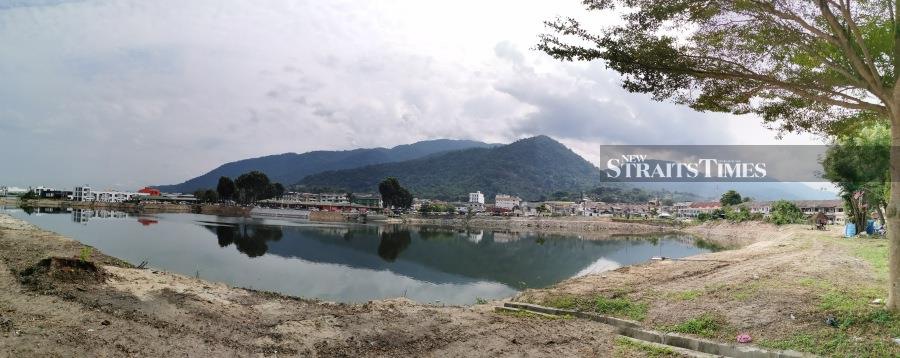OVER the centuries, Kampar hill has been a source of pride and solace for its residents. Standing at 505m, it's a beacon of hope and inspiration for its folks through the ages.
Besides being a national heritage as an important WW2 battle site, it boasts of a mesmerising waterfall. Its traditional name, Mambang di Awan, means "Fairy on the Clouds".
Our ethereal fairy has showered its blessings upon generations of Kamparians and visitors from far and near. Sadly, our beautiful fairy may not be around much longer. There's now a massive development project which threatens to change its spirit and character forever…
"Oh-ee-Oh. . . Oh-ee-Oh!" My brother and his friends yell delightedly before jumping into the egg-shaped pool from a tree trunk overarching it. I'm already in the pool enjoying its cool and refreshing water.
Overhead us, some Rajah Brookes with their characteristic red neck and large fluorescent green and black wings flit gaily. Sitting on the tree tops above, magpies sing cheerfully to greet the morning. It's definitely sweet music to our ears and souls.
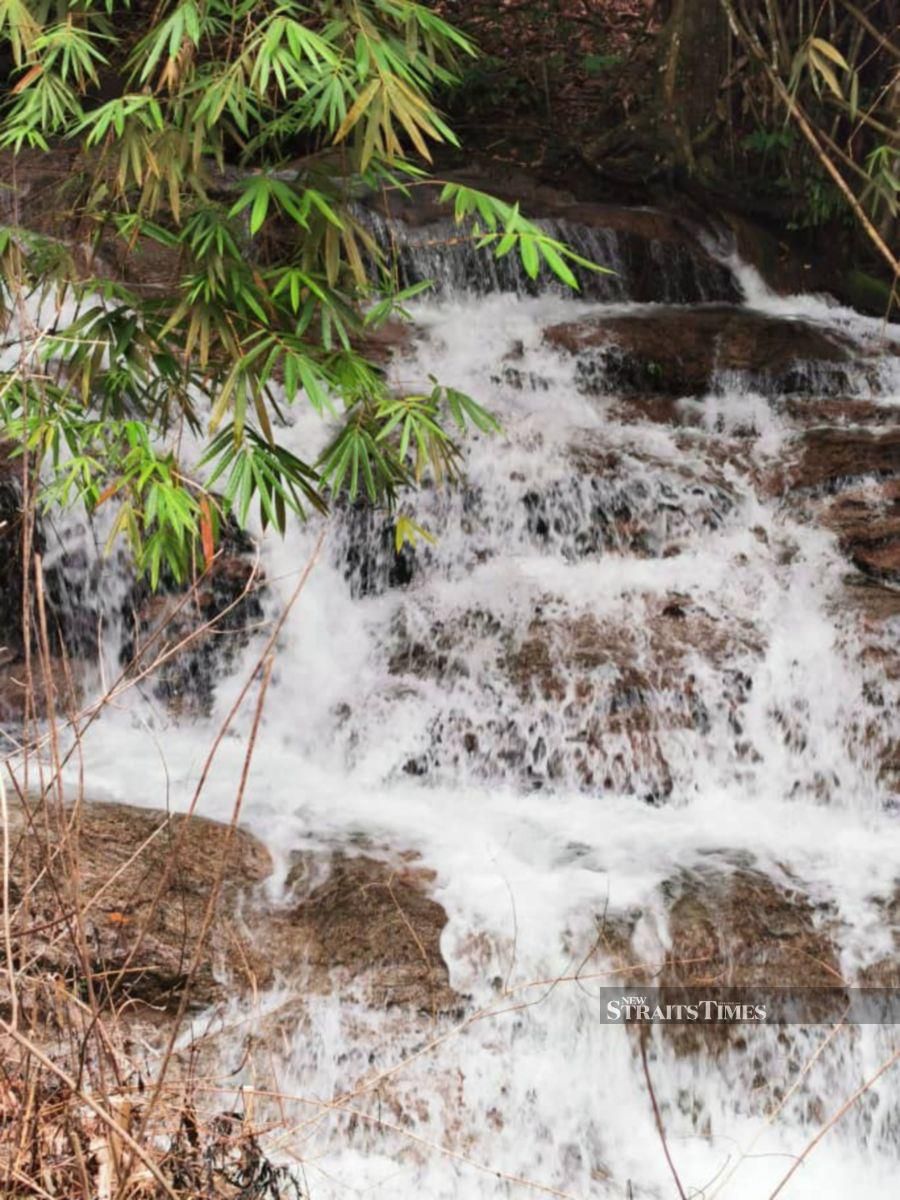
The egg-shaped pool is but one of a series of waterfalls and pools forming the enchanting Kampar waterfalls. Their cool and clear water flows from the summit of the Mambang Di-Awan ("Fairy on the cloud"), the ancient name for Kampar hill.
In the mornings and evenings, legend has it that our Kampar fairy would be dancing on some clouds around its summit. Every morning, Kampar folks would be greeted by the sight of this beautiful fairy. It gives them a renewed sense of vibrancy and energy.
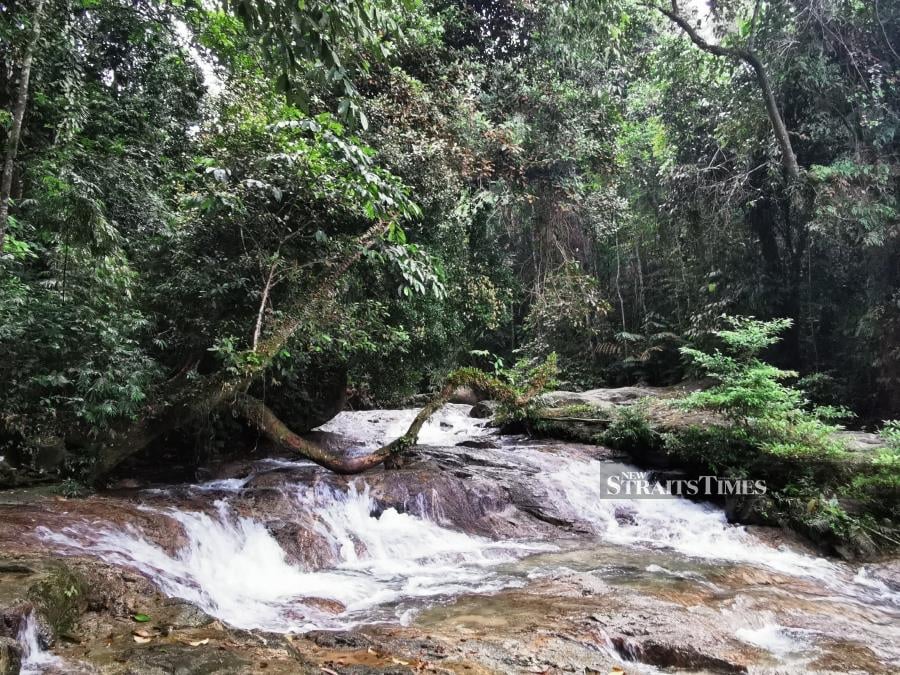
There's a mesmerising charm to the waterfalls in Kampar. There's something for everyone. For the more adventurous like my brother and me, there's the Tarzan jump into the egg-shaped pool. For the more sedentary, there are several "jacuzzi" pools at the side. Their constant whirling and whooshing of water would give us a refreshing massage.
Besides the enchanting waterfalls, Kampar hill also beckons with its rich but sadly forgotten history. During World War 2, the British army fought a valiant battle against the Japanese here. The British army used the tombstones in the Chinese cemetery as shields against the advancing Japanese.
I'm glad that my great grandfather helped the British in spirit, though not in body. The intensive battle delayed the advancing Japanese army, buying precious time for the British to withdraw and regroup later.
HISTORIC SITE

During the battle, several Japanese aircraft were downed by the British. They crashed around the hill and some of their parts are still there today. The war and the ensuing Japanese Occupation caused untold sufferings to the folks of Kampar and Kinta Valley.
The late Chye Kooi Loong, a teacher with a passion for history, had passionately and painstakingly documented the battle of Kampar in his landmark book entitled The History Of The British Battalion In The Malayan Campaign. Chye led many visitors, from far and near, to the various battle sites and regaled them with the rich history of Kampar.
Kampar hill played an instrumental role in shaping the destiny of post-colonial Malaysia. After the war, Malaya was then in the grip of communist insurgency with almost daily battles against the communists. The-then British High Commissioner, Sir General Templer, gave urgent impetus to this crucial campaign by pouring extra personnel and resources into it.
During the Emergency, Kampar hill was first used by the Communists as their base. As the Emergency progressed, the Communists retreated into the upper reaches of the main range of Bujang Melaka and Cameron Highlands.
Using Kampar hill as their base, the British fired their mortars and cannons at their secret hideouts in Bujang Melaka.
During the school holidays, I used to climb Kampar hill with my brother and some friends. On the way up, we'd pass by an old palatial bungalow belonging to the late tycoon tin miner, Eu Tong Sen. Decorated with expensive French chandeliers and Italian marble, it was reputed to be the biggest pre-war bungalow in Malaya. To us schoolboys, it looked like an abandoned and haunted house. We joked that it was the spirit of one of his many wives.
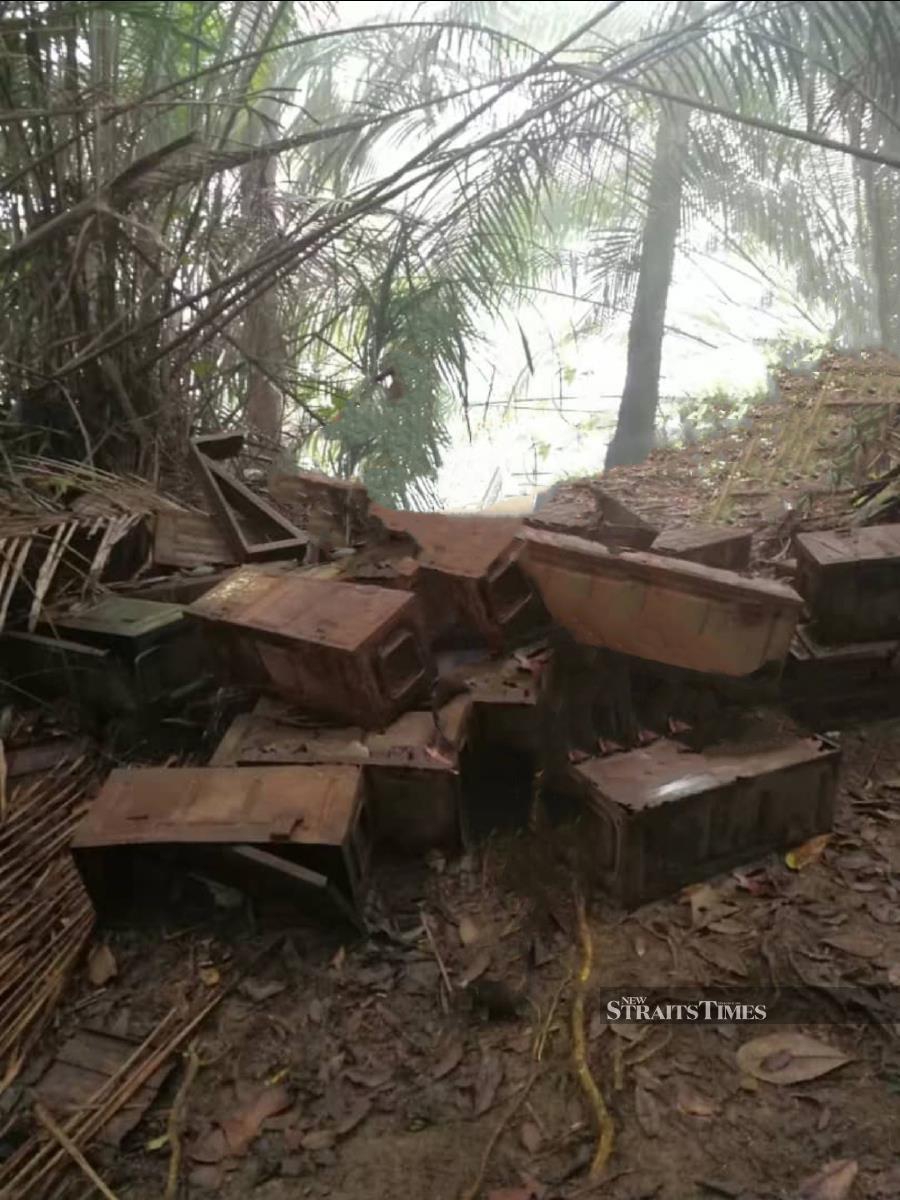
After the bungalow, we'd enter a rubber estate. Its trees served as sentinel to deter the faint hearted. The loud and powerful explosion of rubber pods resembled that of gunfire. Their "ballistic" rubber bullet seeds would fly out at high speed and sting our heads.
At the upper end of this rubber estate were some big and slippery rocks. After surviving the rubber bullets and rock climbing, we'd be greeted by some gentle swaying bamboos.
THE VIEW ABOVE

Near the summit were some fern trees and grotesque-looking branches, due to the gales blowing from the main range. According to legend, the Kampar fairy lives among them. The vegetation looks almost semi-alpine, probably due to the mist and cooler temperatures. I recall my father telling me how he hid in one of the caves at the back of Kampar hill with his family during the war. At night, there were tigers roaring.
At the summit, we could see the entire valley stretching to the horizon. We'd spot numerous tin mines and giant dredges around Air Kuning, Tronoh and Tanjong Tualang, famous for its "big head" prawns. We could also see Kampar town and its bus station.

The nearby hawker centre boasted of some of the best food in Malaysia. The Chee Cheong Fun and fish ball Lo Shi Fun were really fun. So was the charcoal fried Char kway teow and Lor Mei Fan.
Nearer us, we'd see our padang and adjacent ACS school. The padang reminded us of our soccer games and the ice balls that we sucked to our hearts' delight. It also reminded me of the dreadful Sook Ching during the war.
OF FORESTS AND LAKES
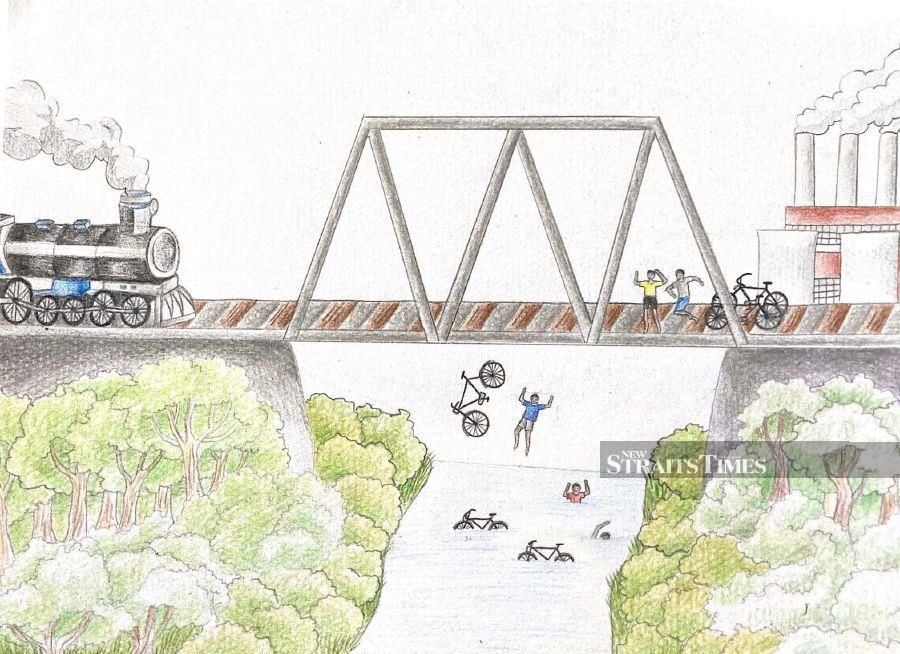
What clearly stood out were the three tall chimneys of the power station in nearby Malim Nawar. Out of curiosity, one weekend, we cycled there using the old route at the back of the town. We cycled past some giant ex-tin mining lakes and were greeted by a sea of pink lotus flowers floating on them.
These beautiful lakes were a haven for the migratory herons from Siberia and other birds from faraway places. They also teemed with fishes, including the ferocious tomans that could bite off a human finger.
After passing by these lakes, we'd enter a thick secondary forest. The wild rambutan there were especially sweet. However, we'd have to brave the big fiery red ants before reaching the rambutan. They had a knack of going inside our pants and biting us.
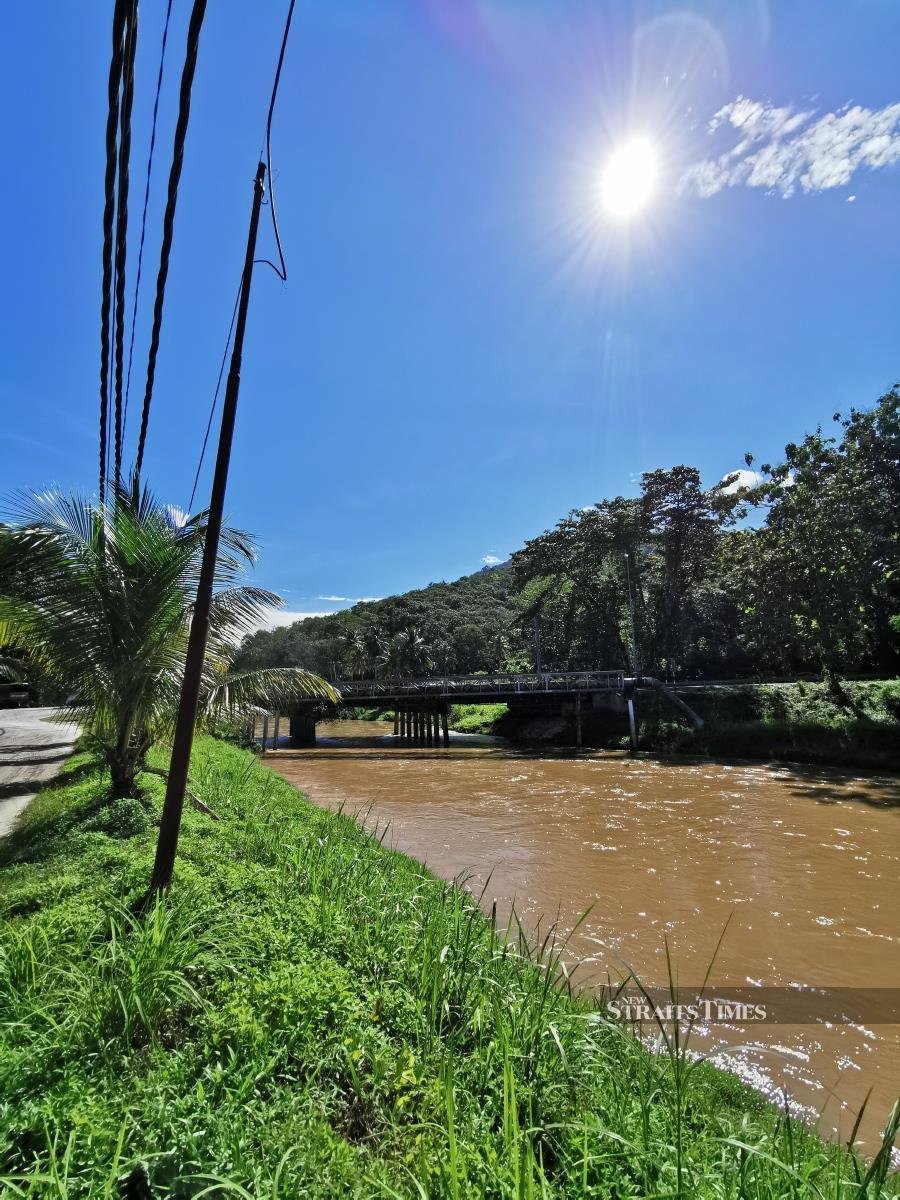
Having been bitten before, we didn't dare to climb it. Instead, we'd use some objects to throw at the low hanging rambutan. Once, my friend used his shoe instead. Unfortunately, it got stuck at the branch. He went home without his shoe and was duly reprimanded by his mother.
Coming out of the forest, we'd meet with a railway line that led to an old iron bridge a short distance away. We had to dismount and push our bicycles slowly across the bridge. It so happened that the train came just when some of us were still halfway through it.
Panic ensued. As the bridge was very narrow, we had no choice but to jump into the river below with our bicycles. Our bicycles ended up with a nice wash but my bicycle got quite dented with the handles being badly twisted. From then on, my bicycle would rattle noisily as if in protest against my ill-treatment of it.
MEMORIES APLENTY

On our way home, we'd cycle past some tin mines. There'd be dogs there to keep tin robbers away at night. The hungry dogs would snarl at us with their long sharp canines showing. The whole gang of about 50 ferocious dogs would chase and bark loudly at us.
Suffice it to say, I'd pedal as fast as I could but my dented bicycle could barely stay ahead of them. I recall some of them trying to bite my legs but I managed to lift my legs up just in time. The thought of their sharp canines tearing apart my skinny body terrified me.
Fortunately, in the end, they ran out of stamina. It was a narrow escape for me. After this close encounter, we stuck to our adventures in Kampar hill and its enchanting waterfalls.
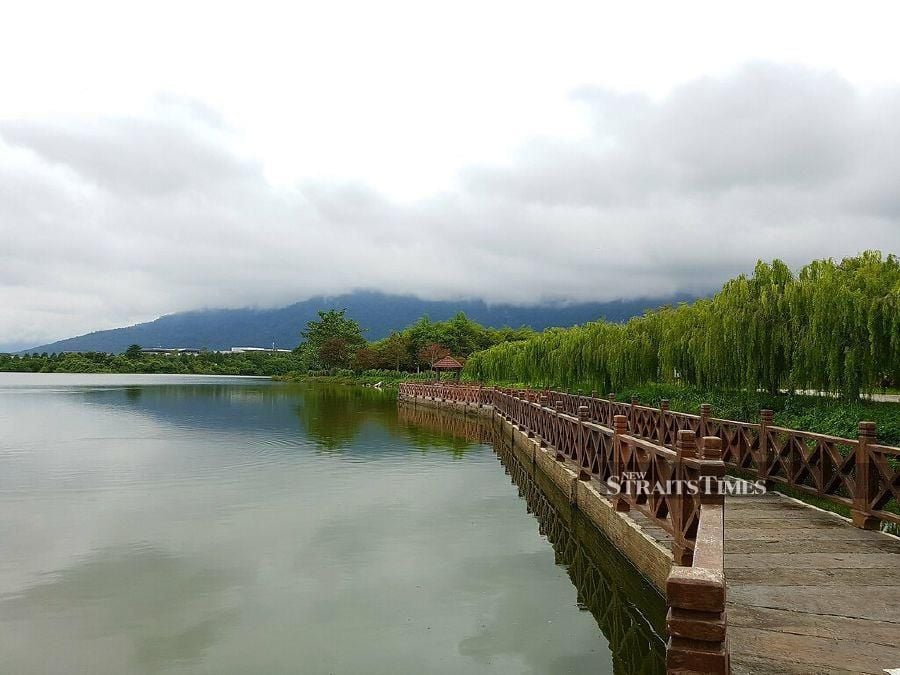
Our adventures up Kampar hill helped to inspire my brother to join the Royal Air Force. Whenever my brother flew his fighter jet over Kampar hill, it brought back warm memories of our childhood adventures. However, sadly, my brother met with an early tragedy and passed on at the early age of 30. Every time I look at Kampar hill, I recall the wonderful moments of our time hiking up the hill and swimming in its waterfalls together.
Although my brother is gone, in my heart I'm glad that others are able to enjoy these wonderful treasures of Kampar. Over the many decades and generations, the hill has become a marker of our collective identity and an anchor of our collective memory.
No wonder Kampar is called Kam Boh, which literally means "Golden Treasure". However, I'm saddened by the realisation that these treasures will not be around much longer.
There's now a new major development project that threatens to change Kampar hill forever. It will undoubtedly erode the spirit, character and identity of the town and residents altogether. It is indeed a sad development for everyone. Will we be able to see our "fairy in the cloud" anymore?
There's a campaign underway to save Kampar Hill. Those wishing to lend their support, visit Facebook link https://www.facebook.com/kathleen.chan.01/

An ode to Kampar
Kampar Hill is surrounded by a lovely mist
It has the feel of a heavenly kiss
Mambang di-Awan, our Fairy on the cloud
It makes all of us so happy and proud
Giving us a beautiful sight and inspiration
It's a revelation over the generations
Kampar has many things to savour
Although it may not have a big city's glamour
From the bosom of our Fairy gushes the Kampar waterfall
A unique treasure which makes the townsfolk stand tall
Many folks have come far and near
Its water is so fresh and crystal clear
The water gives all of us a good complexion
It provides us with a worthwhile rejuvenation
It must have something to do with a special mineral
Our food all taste so good and natural
At the foothill is the famous Kampar chicken biscuit
A tantalising treat to begin your food circuit
The towfoo fah is really soft and white
It smells nice and whets your appetite
Everyone should try the koay teow ardently fried over charcoal
What an aroma, you should eat it before it gets cold
Other favourites are the Fishball soup and Chee Cheong Fun
The fish balls may have grown smaller but the Cheong Fun is still "cheong" and fun
The sifus have been dishing out their wares from days of yore
Until their white hair and teeth are now no more
They'll bring their culinary skills and secrets with them one day
The younger folks fancy neither the sweat nor heat, sad to say
The ponds and lakes remind us of Kampar's rich history
It was the richest tin mining town for almost a century
The townsfolk called it Kam-Boh, meaning "Golden Treasure"
It has produced many colourful tycoons and stories, for good measure
The most beautiful lake is the enchanting Westlake
Morning mists descend upon its still waters, as we awake
It's an oasis of serenity and tranquillity
A symbol of eternal beauty and sentimentality
The lake is calm like a reflection mirror
Full of fishes and exotic birds from as far as Siberia
Surrounding the lake are the weepy willows
If trees could speak, they'd tell us stories of sorrows
Kampar had seen a fierce battle during the War
The British fought the Japanese valiantly until their fall
During the Occupation, the Japanese committed unspeakable atrocities
Water torture and decapitation were among some of the cruelties
The dreaded Sook Ching is the most nightmarish
Just one nod from the hood, a whole family would perish
Many Kinta folks fought against the Japanese bravely
They made huge sacrifices and paid with their lives dearly
After the War, the jungle was roamed by tigers and bandits
The most dangerous were the outlawed communists
The Kinta folks have really seen a lot
Through ups and downs, thick and thin, the Valley is their plot
An old lady shared with me her deep sorrows
Many times, she was worried there might be no tomorrow
During the War, her first husband was killed by the Japanese
After the War, her second one by the Communists
"Pray", tell me, "how am I going to raise my five children?"
Always hungry and crying, their prospects looked barren
Amid the cacophony of insect calls and night owl's cry
As her children went to sleep, her fears subsided and tears dried
All the hardships and sufferings the Kinta folks endured
Deeply etched in their hearts and souls, no balms could cure
They had to face calamity and morbidity with a sense of infallibility
At times it was too much, some even lost their dignity and sanity
Now that the wars and tin mines are over
Kinta Valley has lost much of its fervour
The Valley has now turned sleepy and sloppy
Gone were the days when everyone was happy
Jobs are scarce and businesses are down
The young folks are all leaving town
Yearning for the olden days, some folks seem wistful
Those days will never return, their dreams are wishful
The glory era of the Valley is now behind
The heady days are over, let us be kind
But the sweet old memories still linger
The Japs, British, communists, tin mines, rubber estates and the tiger
Kampar hill is the anchor of our collective identity and memory
Together with all the mysteries and miseries
What will life be like without our Mambang di-Awan?
We cherish our Fairy, there's nothing more we want
The hill project will change Kampar forever
Will we be able to see our Fairy any longer?
Gary Lit Ying Loong, a retired academic from Nanyang Technological University (NTU) Singapore, is presently a Visiting Professor to some universities in Asia and Europe. Reach him at [email protected].


